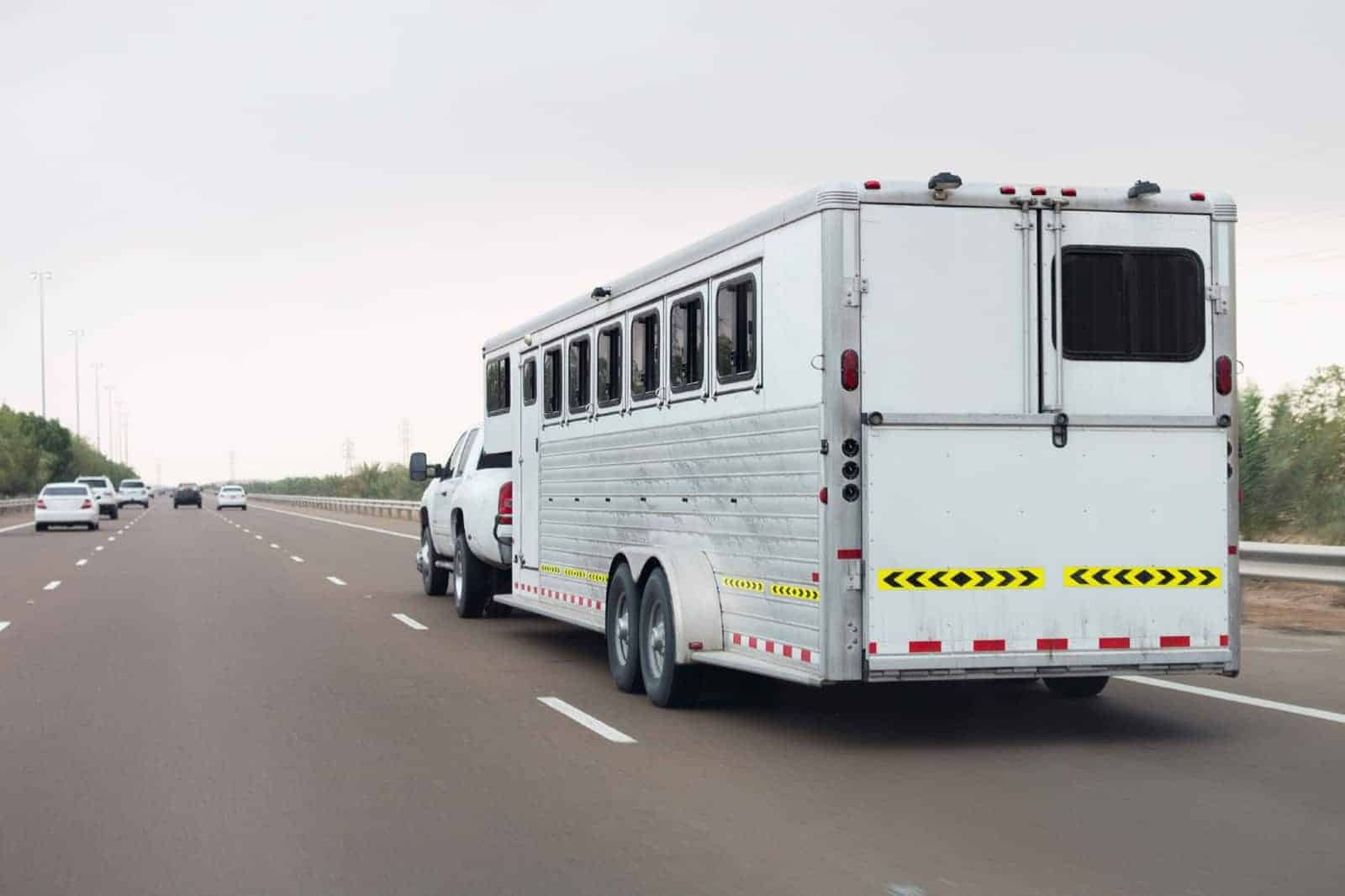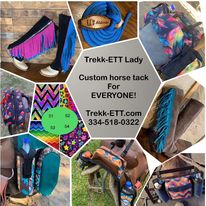A U.S. Equestrian Team veterinarian who has overseen the shipping of horses to six Olympic Games shares what steps to take before, during, and after a long-distance trailer ride.

Steps to take before, during, and after a long-distance trailer ride
Many owners ship horses all over the country these days, whether to attend competitions or relocate. Some haul their horses themselves, while others hire carriers to do the job.
Regardless of who’s behind the steering wheel, long trailer rides are associated with many stresses, including temperature extremes and humidity, flies and other insects, air quality issues, and potential exhaustion, dehydration, and disease exposure. So what should you do if you are preparing a horse for a long haul?
Rick Mitchell, DVM, MRCVS, Dipl. ACVSMR, Certified ISELP, of Fairfield Equine Associates, in Connecticut, will help us answer this question. As a U.S. Equestrian team veterinarian for 25 years, he’s overseen the shipping of horses to six Olympic Games and still regularly manages horses traveling from New England to Florida and back.
First Things First
When preparing a horse for long-distance travel, you need to take certain precautions long before he steps foot on the trailer. “I tell people when they are contemplating (a long trip) to make sure the horse is as healthy as possible to begin with,” says Mitchell. “This includes being fit and conditioned, as well as being vaccinated about a month before the big trip. Have the horse examined at this time to make sure it’s physically not having any issues, and get all your paperwork (e.g., up-to-date Coggins, interstate health certificate) in order.”
Be sure your horse is current on not only the core vaccines but also whatever risk-based ones your veterinarian recommends, such as flu/rhino, strangles, Potomac horse fever, and botulism, depending on where you’re traveling.
Changing Weather Conditions
When traveling across the country you’re often going from one temperature extreme to another. Your biggest concern, whether going from hot to cold or vice versa, says Mitchell, is keeping your horse hydrated. This helps promote sweating and prevent overheating in hot climes and minimize colic risks in cold, and it starts well before the big trip.
RELATED CONTENT: Transporting Your Horse to a Warmer Climate
“A day or two prior to shipment, feed the horse several meals of a slurry or bran mash supplemented with additional electrolytes (per manufacturer’s recommendations) to encourage drinking,” says Mitchell.
En route, he suggests stopping every four to six hours to offer your horse water and, if traveling in winter, check blanket status.
“Don’t overdress the horse with too many blankets or sheets, and when you do stop, check for sweating to see if clothing or ventilation needs to be adjusted,” says Mitchell.
Ventilation is also key to keeping your horse comfortable, particularly during extreme temperature swings. “Don’t close all the windows—you need air moving all the time, even in winter,” he says. “Vents in the tops of trailers work quite well to move air through.”
Preventing Respiratory Problems
Respiratory issues such as shipping fever and equine asthma are common side effects of long road trips, thanks to the stress involved, inhalation of dust and debris, and horses’ reduced ability to clear their airways if tied. Give your horse the best chance of avoiding these by making frequent water stops, letting him lower his head, and providing dust-free hay or haylage. Mitchell says horses with a history of respiratory problems or travel stress might be better off trailered loose in a box stall or a double stall, so they have freedom to move about.
“If a horse has a history of difficulty being shipped,” he says, “I might give (intravenous [IV] fluids) right as the trip begins, along with B complex and C vitamins. Horses make these in their gut and liver, but if they are under stress it might be harder for their bodies to manufacture them. IV fluids with vitamins or vitamin injections alone are given by a veterinarian as the last thing before the horse gets on transport. The owner can also give (the horse) a good vitamin-mineral supplement—there are many good products out there that can help manage travel fatigue.”
As much as possible, minimize dust in the horse’s environment. But Mitchell does suggest putting down some bedding to absorb urine and reduce ammonia exposure, which irritates the airways. “Use something minimally dusty and, perhaps, dampen it with a hose before traveling,” he says.
Offering Hay and Water
Mitchell says giving horses hay during travel is a must—as long as it’s good-quality, nondusty hay.
“Horses need to have something to eat when traveling, as one of the major causes of gastric ulcers is lack of food and an empty stomach,” he says. “Having hay available the whole time minimizes the probability of gastric ulcers in an already stressful situation.”
If you’re concerned about hay dust and particulates causing respiratory issues, hose or soak the forage first.
As we all know, some horses drink well while others don’t. To encourage water intake, says Mitchell, offer your horse sloppy bran mashes, electrolytes, flavored supplements, or Gatorade.
Having a horse drink on his own is what’s natural and best, he says, but veterinarian-administered IV fluids before departure can help the poor drinker; if conditions are excessively hot; or if there’s been stress from heavy competition prior to shipment, recent travel, or illness of any kind.
Battling the Bugs
While flies can be the bane of your existence around the barn, they aren’t typically an issue on the road. However, “if you are going through a buggy area,” says Mitchell, “keeping the trailer clean and reasonably hygienic is important, along with fly repellent for the horse. The biggest concern is mosquito-borne diseases, so having horses well-vaccinated to begin with is what’s most important.”
Taking Breaks
Pull off the interstate periodically to allow your horse to rest his muscles and get fresh food and water. How frequently depends on the trip length and the horses’ travel experience.
“We routinely ship horses from New England to Florida and can make the trip in 24 to 27 hours,” says Mitchell. “If the trip is going to be long, you can take them off-truck and hand-walk them for 20 or so minutes every 12 hours. We often ship without getting them off the truck when it’s around 20 to 24 hours, especially if the horses are used to it. But, we do stop for fuel breaks and meals for a couple of hours and let them rest (in the trailer).”
However, don’t drag out a trip by making drive days too short—anything under six hours, says Mitchell. If a trailer ride ends up lasting several days, it’s only increasing the stress on your horse.
Stabling Overnight
Biosecurity is the biggest concern when overnighting on a long trip. “If you are going to stable overnight, locate a facility where your horses can be isolated (from the resident population),” says Mitchell. “Request to be in stalls thoroughly cleaned and disinfected. Wash down mangers, buckets, hay racks or troughs, stall walls, crossties, or anything else horses might contact.”
Better yet, bring your own buckets from home. He says dilute chlorhexidine is a good choice for disinfecting and is readily available at tack/feed stores. Dilute household bleach is another inexpensive alternative, he adds, but the smell may deter eating and drinking, which we know are critical, so be mindful about using it on temporary stalls and the buckets and feeders within.
Applying Protection
You might wonder if your horse needs to be wrapped head-to-toe in shipping boots and head bumpers for the duration of his journey. The answer is maybe. “Some horses need to be padded up and managed with boots, but others are going to kick and carry on because of the boots and may be better off without them,” says Mitchell. “It comes down to the fact that you need to know your horse and what’s best for him or her. I am totally in favor of using shipping boots or leg wraps if applied by a competent groom or horse owner. I just don’t want boots (or wraps) to slip or fall down, where they become an irritant to the horse or cause uneven pressure on part of the limb.”
Whether you’ll be the one unloading and caring for your horse when he arrives at his destination or someone else will be receiving him, his needs are basically the same as when he departed: food, water, and movement.
“Keep the horse well-hydrated with oral electrolytes, dampening hay, or by administering IV fluids if appropriate,” says Mitchell. “If there’s any suspicion of trouble when you arrive, get a vet exam as soon as possible. If the horse is depressed, not drinking, febrile (has a fever of 102ºF or greater), or coughing, contact a vet right away. Some horses will spike a mild fever after travel that will come down on its own. This is often the immune system simply responding to the stress of travel.”
Take-Home Message
As for Burris and her sensitive filly, who traveled three days, arriving to her new farm stressed and underweight, things worked out. “We put her in a stall with a paddock so she could move around freely and see the other horses but not touch noses with them,” says Burris. “She had free-choice hay and water, and we kept a close eye on her.”
After a day or so the snotty nose dissipated, and the filly was moving better and looking brighter. Knowing what she does now, Burris says she’ll likely arrange for her to be in a box stall the next time she travels long-distance.
“Prepare the horse for travel long before it’s going to travel, and that will be your best measure and first line of defense,” says Mitchell.











